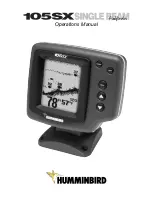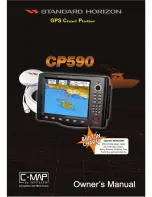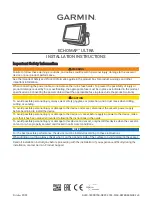
When in Auto mode, the horizontal line at the top of the screen is the “zero
line,” representing the surface of the water. Occasionally there is a gap in this
line. This gap indicates the unit is updating the display even if the bottom is not
visible on-screen, or if the bottom information is not changing.
New sonar information appears on the right side of the graphic area of the
display and moves to the left as new information is displayed. The
425SX
automatically selects the appropriate depth range to show the depth of water
beneath the transducer. This range is selected so the bottom representation is
typically shown about
²⁄₃
down the display.
Bottom.
The graphic depiction of the bottom provides the user with an
effective tool for understanding the composition of the bottom. The FSTN type
display uses 4 discrete levels of gray to indicate the intensity of the returned
sonar signal. The
425SX
can display even the smallest sonar returns with light
gray pixels. Larger returns are displayed with darker shades of gray. If the
bottom is hard and smooth, the bottom depiction is narrow and dense. If the
bottom is soft mud or sand, the depiction will be thick and less dense. This
indicates that much of the signal is absorbed by the soft bottom. If the bottom
is rocky or rugged in composition, the depiction is of varying density and
textured in appearance.
Wave action also affects the bottom
depiction. The information drawn is
a distance measurement, so if the
boat is moving up and down over
flat bottom, the bottom depiction
often appears in regular variations
that match wave timing.
Structure.
Structure is defined as
any object physically attached to the
bottom. The sonar configuration of
the
425SX
is optimized to give the
most accurate depiction of bottom
structure possible. Grass, trees,
stumps, wrecks or other debris are
accurately displayed, however the
9
USING THE
425SX
WHAT YOU SEE ON-SCREEN
Surface Clutter Rocky Bottom
Hard Bottom Soft Bottom
m
www.reelschematic.com
www.reelschematic.com






























